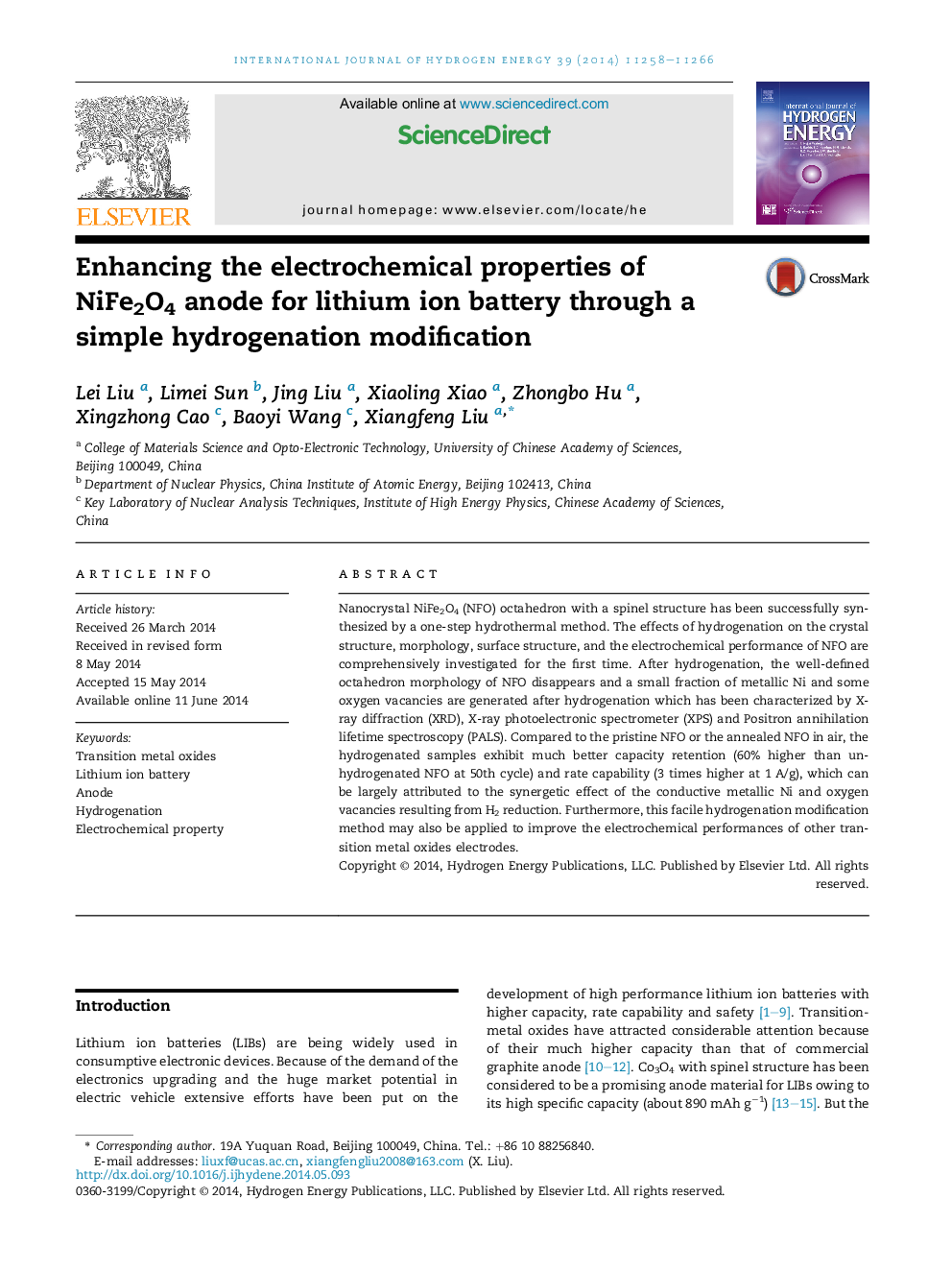| Article ID | Journal | Published Year | Pages | File Type |
|---|---|---|---|---|
| 1272267 | International Journal of Hydrogen Energy | 2014 | 9 Pages |
•NiFe2O4 octahedrons have been successfully synthesized by a one-step hydrothermal method.•Hydrogenation modifies the surface structure of NiFe2O4 and generates some oxygen vacancies and metallic Ni.•Hydrogenation largely improves the cycling capacity (60% higher at 50th cycle) and rate capability (3 times higher at 1 A/g).•The simple hydrogenation modification method might also be applied to other transition metal oxides electrodes.
Nanocrystal NiFe2O4 (NFO) octahedron with a spinel structure has been successfully synthesized by a one-step hydrothermal method. The effects of hydrogenation on the crystal structure, morphology, surface structure, and the electrochemical performance of NFO are comprehensively investigated for the first time. After hydrogenation, the well-defined octahedron morphology of NFO disappears and a small fraction of metallic Ni and some oxygen vacancies are generated after hydrogenation which has been characterized by X-ray diffraction (XRD), X-ray photoelectronic spectrometer (XPS) and Positron annihilation lifetime spectroscopy (PALS). Compared to the pristine NFO or the annealed NFO in air, the hydrogenated samples exhibit much better capacity retention (60% higher than un-hydrogenated NFO at 50th cycle) and rate capability (3 times higher at 1 A/g), which can be largely attributed to the synergetic effect of the conductive metallic Ni and oxygen vacancies resulting from H2 reduction. Furthermore, this facile hydrogenation modification method may also be applied to improve the electrochemical performances of other transition metal oxides electrodes.
Graphical abstractFigure optionsDownload full-size imageDownload as PowerPoint slide
